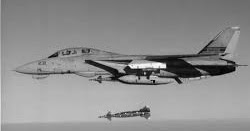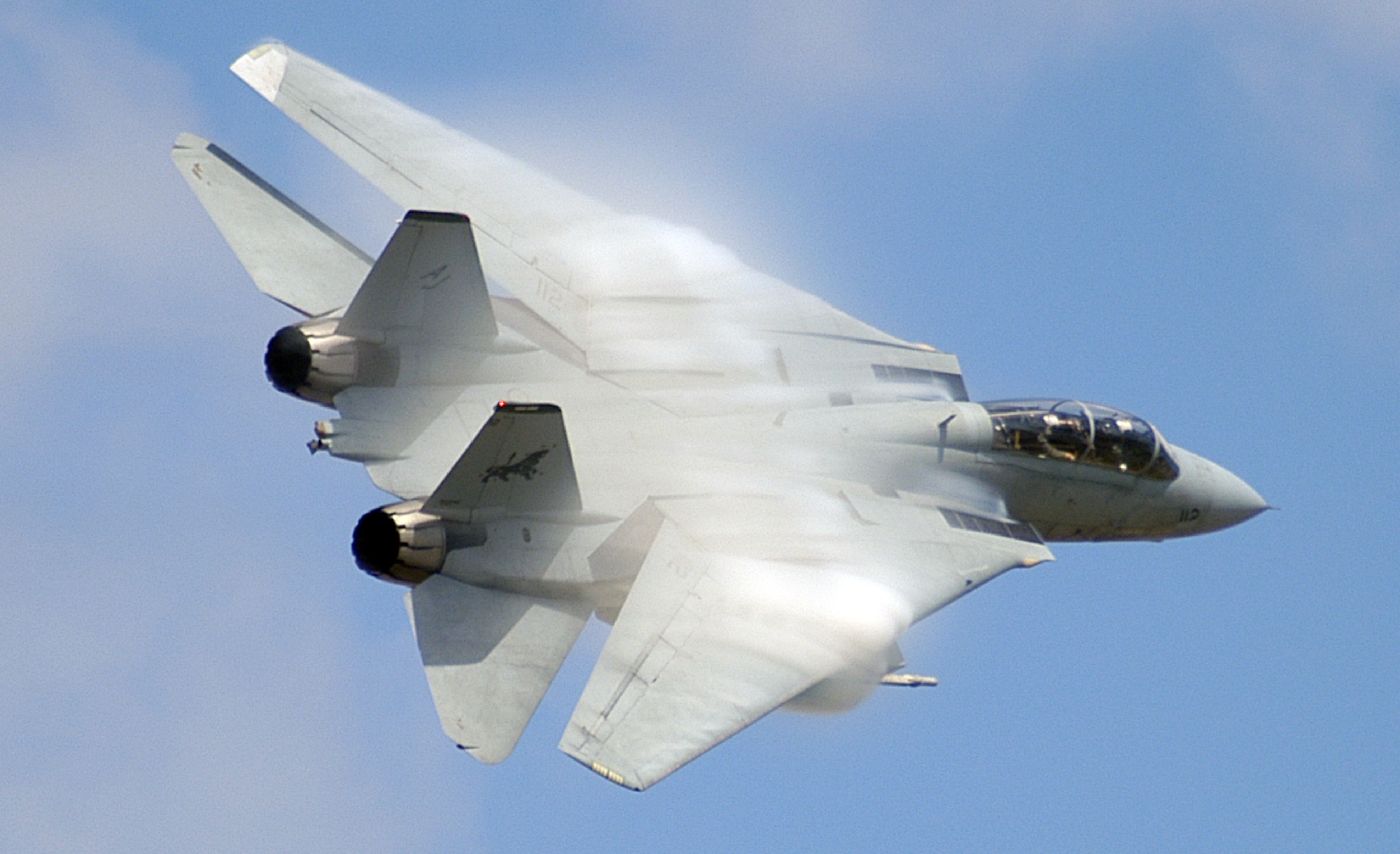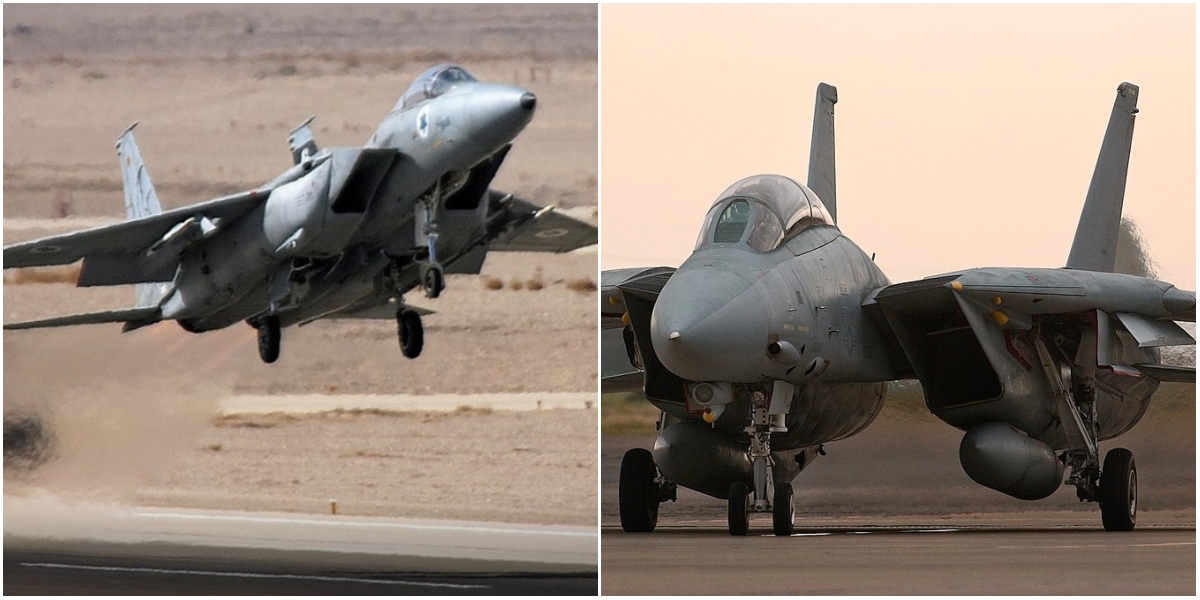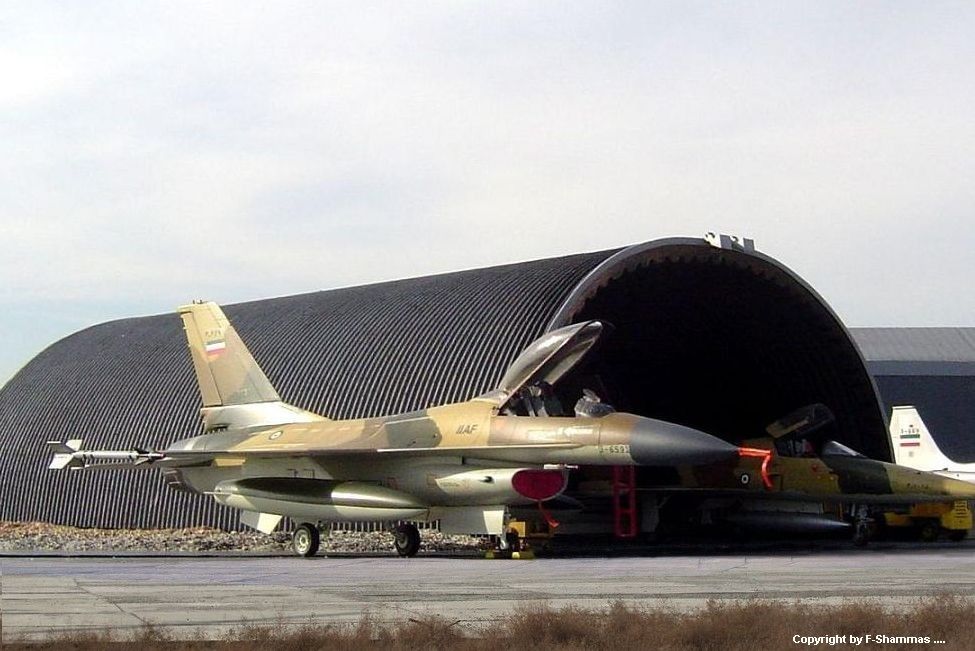Manuducati
ACCESS: Secret
- Joined
- 25 November 2020
- Messages
- 332
- Reaction score
- 1,065
Try to be honest see theses sourcesI give up debating with you on the subject as you keep repeating the same things without taking into consideration what multiple contributors are trying to explain.
Have a nice day.
View attachment 658195


I think I remember that thread. IIRC, the "D" model already had greatly reduced maintenance requirements compared to the "A" model. And the ST21 would be lower still. Mainly down to the total replacement of all remaining analog systems with digital ones and the reduction of wiring in the airframe (along with replacement of a number of screwed on access panels with hinged easy access panels).I think it was in an old thread in that forum about "evolved Tomcats" from the D to the ASF21, @F-14D explained one of the few advantage of the Hornet and Superbug over legacy Tomcat related to hydraulics and wiring - that was the main maintenance weakness of older F-14.
In the early 90's when both Superbug and advanced Tomcats were considered it was found that correcting the wiring and hydraulic maintenance-intensive aspects of the Tomcat would amount to a deep internal rework of it, making it much more expensive.
The boundaries between the two was (more or less) F-14D (old maintenance intensive systems, but already in service) versus Tomcat 21 / ASF something (1990's tech level instead of late 60's: big difference)
Hornets & Superbugs, for all their flaws elsewhere, were and are a generation ahead of the Tomcat here. Don't forget that through the F-111B the Tomcat related to the F-111, pre-1964 tech levels. The Hornet had a decade of advanced tech or more (1978 and beyond).
I'll try to find the thread and relevant posts...
The last flight of the F-14 Tomcat in US service took place October 4, 2006, with the final flight retirement ceremony on September 21, 2006. Two F-14’s were readied for the ceremonial final flight; after the primary plane experiencing mechanical problems, a backup was flown instead. The failure was a reminder of one of the reasons for the retirement, high maintenance costs. The F-14 Tomcat was officially retired on September 22, 2006 at Naval Air Station Oceana. The F-14 fleet is mothballed at the Davis-Monthan “Boneyard.”Can you provide any substantive evidence that the F-14's variable geometry wing had a very high need for maintenance? Any source documentation? Do you know what the top 10 maintenance drivers were?
Protip: source documentation (not endlessly repeated web comments) will build your case.
So, in other words, no, no you can't provide any actual evidence. You're using an anecdote from the type's final fight, one that doesn't even specify what the problem was, to try and prove the VG wing is what killed it. Everyone here has acknowledged that the F-14A was a maintenance pig. But as has been pointed out, repeatedly I might add, the F-14D required vastly fewer maintenance hours per flight hour than the "A" did.The last flight of the F-14 Tomcat in US service took place October 4, 2006, with the final flight retirement ceremony on September 21, 2006. Two F-14’s were readied for the ceremonial final flight; after the primary plane experiencing mechanical problems, a backup was flown instead. The failure was a reminder of one of the reasons for the retirement, high maintenance costs. The F-14 Tomcat was officially retired on September 22, 2006 at Naval Air Station Oceana. The F-14 fleet is mothballed at the Davis-Monthan “Boneyard.”
Grumman F-14D Tomcat – Prairie Aviation Museum
this is a museum of aviation thus you can consider it a good source.
more maintainence means more money too, less reliability and less flying hours considering F-14 was more expensive than F-18C and less reliable why you will buy more F-14? a museum of aviation has aircraft technicians you will not satisfy because you do not want even believe an aviation museum run by aircraft techniciansSo, in other words, no, no you can't provide any actual evidence. You're using an anecdote from the type's final fight, one that doesn't even specify what the problem was, to try and prove the VG wing is what killed it. Everyone here has acknowledged that the F-14A was a maintenance pig. But as has been pointed out, repeatedly I might add, the F-14D required vastly fewer maintenance hours per flight hour than the "A" did.The last flight of the F-14 Tomcat in US service took place October 4, 2006, with the final flight retirement ceremony on September 21, 2006. Two F-14’s were readied for the ceremonial final flight; after the primary plane experiencing mechanical problems, a backup was flown instead. The failure was a reminder of one of the reasons for the retirement, high maintenance costs. The F-14 Tomcat was officially retired on September 22, 2006 at Naval Air Station Oceana. The F-14 fleet is mothballed at the Davis-Monthan “Boneyard.”
Grumman F-14D Tomcat – Prairie Aviation Museum
this is a museum of aviation thus you can consider it a good source.
Because it's a vastly more capable aircraft and could do things that even the Super Hornet still struggles to do. But that doesn't seem to matter to youwhy you will buy more F-14
No it is not like that.Because it's a vastly more capable aircraft and could do things that even the Super Hornet still struggles to do. But that doesn't seem to matter to youwhy you will buy more F-14
F-14 entered service in 1974 and its wing sweep angle could vary between 20 and 68, as shown in Figure 6, to give the optimum lift-to-drag ratio in flight by automatic control. Sometimes the wings even can be ‘overswept’ to 75 by overlapping the tail to save space. The F-14 is capable of flying and landing safely with the wings swept asymmetrically in emergencies (Wikipedia document 03). More than a half dozen major military aircraft appeared with variable sweep wings during the 1960s and 1970s. However, the large metal gearbox that moved the wings was so complicated and heavy that the maintenance requirements were increased and fuel performance was decreased. By the 1980s, no new work on variable sweep technology has been incorporated into any new production military aircraft in at least the last 15 years (Century-of-flight document).Can you provide any substantive evidence that the F-14's variable geometry wing had a very high need for maintenance? Any source documentation? Do you know what the top 10 maintenance drivers were?
Protip: source documentation (not endlessly repeated web comments) will build your case.
this is a museum of aviation thus you can consider it a good source.
in hindsight, knowing what we do now after years of experience and knowledgethis is a museum of aviation thus you can consider it a good source.
I worked on the F-14 program for about 18 years in an engineering capacity. I had full flightline access in the course of my duties and dealt with the maintainers and officers. I attended and participated in many contractor/customer engineering management meetings dealing with F-14 software, structures and fatigue life.
By your logic (above), you can consider me a good source.
an anonymous source can not be a reliable source, regardless where you worked, more people worked in the program, and more papers give a clearer view, the document i gave you is based upon scientific research give me proof of your identity and your documents published by a scientific and industrial well stablished intitution to back you up, at this moment you have no way to proof you credentials.this is a museum of aviation thus you can consider it a good source.
I worked on the F-14 program for about 18 years in an engineering capacity. I had full flightline access in the course of my duties and dealt with the maintainers and officers. I attended and participated in many contractor/customer engineering management meetings dealing with F-14 software, structures and fatigue life.
By your logic (above), you can consider me a good source.
Correct no one is saying he has not or has has done things, that was not my point.@MIRAGE 4000 I suggest you don't pick a fight with @aim9xray I know exactly who he is and (some of) what he's done, and you can trust his statements. Also your sources aren't terribly relevant to the points raised, they are very generic and in one case actually undermine your argument when read.
The F-14A was a maintenance hog in the early 2000s for various reasons not specifically related to the swing wing. There were a lot of developments in avionics reliability between the late 1960s and the late 1970s and the F-14A was on the wrong side. The avionics were also very complicated in order to achieve the capability level demanded.
The F-14A engines were older technology and less reliable than the F404. The F-14 airframes were older than the F-18s - like people, older airplanes need more work.
The ultimate verification of the 'swing wing' for the F-14 mission is that the Lockheed Martin Naval ATF design designed in the late 80s/early 90s as its successor included a swing wing as did several AF/X studies afterwards. Variable camber and strakes certainly improve fixed wing performance in some areas, but they don''t make the VG wing redundant, in some situations it could still make sense today depending on mission requirements.
Sorry but I'm a firm beleiver that the reasons to change are written after the change. So F18 is smaller = fit more on a ship than F14. F18 has fixed wings, must save a fortune on checking those swivel points. F14 was 'unafordable' seemed pretty affordable when we bought them?Try to be honest see theses sourcesI give up debating with you on the subject as you keep repeating the same things without taking into consideration what multiple contributors are trying to explain.
Have a nice day.
View attachment 658195
The last flight of the F-14 Tomcat in US service took place October 4, 2006, with the final flight retirement ceremony on September 21, 2006. Two F-14’s were readied for the ceremonial final flight; after the primary plane experiencing mechanical problems, a backup was flown instead. The failure was a reminder of one of the reasons for the retirement, high maintenance costs. The F-14 Tomcat was officially retired on September 22, 2006 at Naval Air Station Oceana. The F-14 fleet is mothballed at the Davis-Monthan “Boneyard.”
The initial acquisiton cost of an F-14 is quoted by the US Navy at around $38 million. However, the primary disadvantage of the aircraft is not its purchase cost but maintenance expenses. As discussed previously, the life-cycle costs of operating and maintaining an aircraft far exceed the initial acquisition cost. These costs only grow as planes age and require increasingly more maintenance hours per flight hour. This trend has hit the F-14 harder than most of its contemporaries because of its complex airframe (including the variable-geometry wings) and harsh salt-air environment at sea. The F-14 is currently the most expensive aircraft to operate in the Navy inventory, requiring 40 to 60 maintenance manhours per flight hour. For comparison, the F-18 Hornet requires only 20 hours of maintenance and the latest F-18E/F Super Hornet requires just 10 to 15 hours. These high maintenance costs played a large role in the Navy's decision to move the retirement of the F-14 up from 2010 to 2006.
Maintenance Upgrades
One of the most common justifications for a new design aircraft is that the existing one is too maintenance intensive (even though it was undoubtedly considered a vast maintenance improvement over its predecessor!). Consider the F-14 Tomcat and its replacement, the F-18 Hornet. No one had any real performance issues with the F-14 Tomcat but it was considered to be too maintenance intensive.
The decision to incorporate the Super Hornet and decommission the F-14 was mainly due to high amount of maintenance required to keep the Tomcat operational. On average, an F-14 required nearly 50 maintenance hours for every flight hour, while the Super Hornet requires five to 10 maintenance hours for every flight hour.
Maintenance Upgrades
One of the most common justifications for a new design aircraft is that the existing one is too maintenance intensive (even though it was u...navy-matters.blogspot.com

The question is you do not want to see the variable geometry wing was one of the main reason it had a very high need for maintainace and that killed the further production and deployment of F-14 besides it was too expensive
I've just enough 'engineering' instincts to suggest they should have looked much harder at a big-canard delta with growth potential for bigger engines.
Good question. Realize first, that the F-14 was designed by very smart people using the the best technology, materials and electronics of the mid-1960s. Also realize that Grumman had little control over the Navy requirements and how the Navy thought they were going to use their new fighter, nor the perceived threat environment. Grumman also had no control over the selection of the TF-30 nor the usage of the Phoenix AMCS or the AIM-54 missile. There was a very short time between Contract award and First Flight (IIRC) which left little or no time for prolonged subsystems development. Even so, the CSDC (Computer Data Signal Converter) and the SDDI interface (pre-dating the MIL-STD-1553 databus by years) were bleeding edge technology at the time.in hindsight, knowing what we do now after years of experience and knowledge
how would you have re-designed the F-14 back then if you could have the chance. what would you change if anything?
Quite so. This is the internet, I could be a dog typing at the keyboard and you would not be the wiser.an anonymous source can not be a reliable source, regardless where you worked, more people worked in the program, and more papers give a clearer view, the document i gave you is based upon scientific research give me proof of your identity and your documents published by a scientific and industrial well stablished intitution to back you up, at this moment you have no way to proof you credentials.this is a museum of aviation thus you can consider it a good source.
I worked on the F-14 program for about 18 years in an engineering capacity. I had full flightline access in the course of my duties and dealt with the maintainers and officers. I attended and participated in many contractor/customer engineering management meetings dealing with F-14 software, structures and fatigue life.
By your logic (above), you can consider me a good source.
Even If you worked, you need to present offical papers that atest your veracity, the documentation by a museum and an aerodynamic study are enough to support a view.
Aircraft are multidiciplinary endevours.Quite so. This is the internet, I could be a dog typing at the keyboard and you would not be the wiser.an anonymous source can not be a reliable source, regardless where you worked, more people worked in the program, and more papers give a clearer view, the document i gave you is based upon scientific research give me proof of your identity and your documents published by a scientific and industrial well stablished intitution to back you up, at this moment you have no way to proof you credentials.this is a museum of aviation thus you can consider it a good source.
I worked on the F-14 program for about 18 years in an engineering capacity. I had full flightline access in the course of my duties and dealt with the maintainers and officers. I attended and participated in many contractor/customer engineering management meetings dealing with F-14 software, structures and fatigue life.
By your logic (above), you can consider me a good source.
Even If you worked, you need to present offical papers that atest your veracity, the documentation by a museum and an aerodynamic study are enough to support a view.
In fairness, I would ask that you apply the same critical research standards and investigation of qualifications of the unidentified copywriter at "an aviation museum*" and your blog quotations and Wikipedia resources**, OK?
@Mirage4000, you seem passionate about your interest in aerospace. Good! But please research deeper and try to dig down to source material (i.e. Grumman papers - good) rather than present day blog entries (opinion!) and Wikipedia writeups. Do that with passion, understanding, a open mind and a willingness to learn and you will go far.
Returning to the topic at hand, it was always my impression that the 303F was cooked up as a strawman design to show how the 303E with the VG wing was the superior design. You and I have no idea (and never will) if any of the designers had "their finger on the scale" (or not), in able to make the fixed wing come out worse in comparison to VG. I think that it is telling that all of the other publicly released Grumman Model 303 designs 303-60 to 303G have variable sweep wings.
*the discussion at the Prairie Air Museum has not been updated in 14 years.
**the discussion pertains specifically to a Supersonic Business Jet design exercise for high altitude supersonic cruise of 1.6 Mach and and implied load factor of no more more than 3 (probably 2.5). No requirements for Mach 2+ flight, external stores carriage, in-flight refueling, sub/supersonic air combat maneuvering at up to 7.33g nor carrier compatibility are mentioned. It would appear that the stated design trades in this study are specifically related to this design only.

That still pisses me off. I'll never understand Cheney's God damn hate-boner for Naval Aviation in general and the Tomcat in particular. That man singlehandedly screwed the Navy's carrier air wings all the way up until today. If it wasn't so f*****g maddening, it would honestly be impressiveFor the record, the F-14D went out of production because Dick Cheney and DoD ordered it out of production and directed the Navy to develop a new aircraft based on the F/A-18. This was not the Navy's choice as at that time they planned that versions of the F-14 would be the Navy's primary fighter (and probably strike fighter) until 2015.
what was Dick's official stance?For the record, the F-14D went out of production because Dick Cheney and DoD ordered it out of production and directed the Navy to develop a new aircraft based on the F/A-18. This was not the Navy's choice as at that time they planned that versions of the F-14 would be the Navy's primary fighter (and probably strike fighter) until 2015.
The F-14 was never intended to go into production with the TF30s, they were just for the early few F-14s to speed development of the aircraft However reliability and cost problems with the F401 (a derivative of the F100 that was supposed to be the production version for the Tomcat) forced the Navy to stay with the TF30 until the arrival of the superb F110. Until the F110 there were no better engines for the USN to provide. The Navy simply wasn't going to be provided the funds necessary to develop a new engine on its own.It would look like a F-15B except with TF30 engines that suck. Maybe it would motivate the USN to provide better engines ?

The question is no politician makes a decision like that without justifying it.For the record, the F-14D went out of production because Dick Cheney and DoD ordered it out of production and directed the Navy to develop a new aircraft based on the F/A-18. This was not the Navy's choice as at that time they planned that versions of the F-14 would be the Navy's primary fighter (and probably strike fighter) until 2015.
it would have been nice had the timing of the F110 and F-14s been better. would have made a great hi-lo mix with the F-16 for some countries.
I think Pre REvolution Iran could have been a possibility as they were also thinking of the F-16 to go with the F-14

It's a plastic model - there's a guy who builds great models and dioramas and takes photos outside in natural daylight.it would have been nice had the timing of the F110 and F-14s been better. would have made a great hi-lo mix with the F-16 for some countries.
I think Pre REvolution Iran could have been a possibility as they were also thinking of the F-16 to go with the F-14

Wait, is that F-16 picture true or fabricated ? I mean, where the Shah F-16s that close from delivery ? (I do know they were diverted to Israel IMHO )
It looks sexy as hell in that camo.
It's a plastic model - there's a guy who builds great models and dioramas and takes photos outside in natural daydaylightit would have been nice had the timing of the F110 and F-14s been better. would have made a great hi-lo mix with the F-16 for some countries.
I think Pre REvolution Iran could have been a possibility as they were also thinking of the F-16 to go with the F-14

Wait, is that F-16 picture true or fabricated ? I mean, where the Shah F-16s that close from delivery ? (I do know they were diverted to Israel IMHO )
It looks sexy as hell in that camo.
